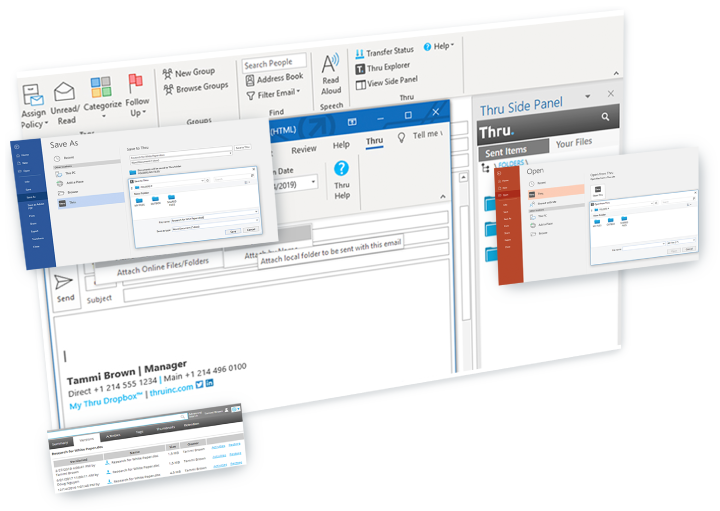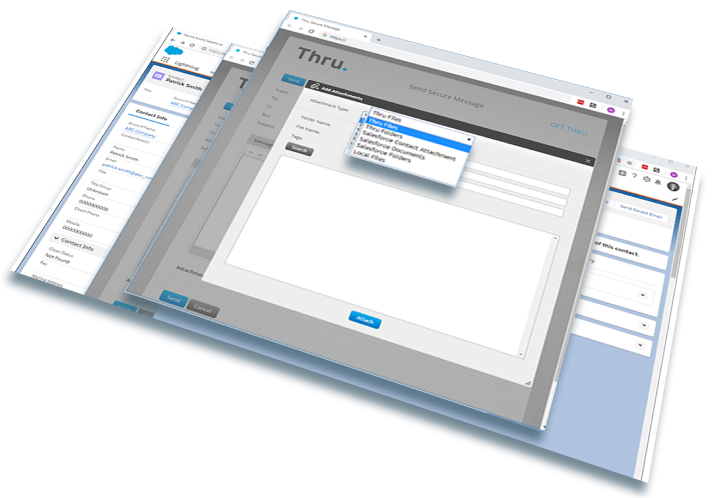File Transfer Integrations:
Definitions & Resources
File transfer integration occurs when managed file transfer (MFT) software is directly connected to an integration platform, an application or an endpoint. Integration can be achieved with a pre-built connector or with a custom-built connector that uses an API.
Integration Platform (iPaaS) Connectors
Add guaranteed delivery and persistence to file transfers without coding.
Deliver files transformed by MuleSoft or Boomi without increasing development time or sacrificing reliability. Use integration platform as a service (iPaaS) connectors to handle large file transfers, high transfer volumes and any-to-any workflows.
 MFT Connector for Boomi »
MFT Connector for Boomi »
Control file transfers while shortening cross-vendor integration times and providing granular visibility into file exchanges.
 MFT Connector for MuleSoft »
MFT Connector for MuleSoft »
Map persistent file transfer flows to MuleSoft data processing flows for data that requires processing or transformation.
Additional Resources about MFT Integration with iPaaS
See more about how MFT and iPaaS are a cohesive integration solution »
White Paper: Read how MFT extends your integration platform »
Client/Server Connectivity
Meet business and security requirements for file transfers easily.
Make inbound or outbound file transfer connections. Thru can act as a client or server for SFTP and FTPS protocols.
Read How File Transfers between SFTP Clients and Servers Work »
Cloud Storage Connectors
Protect files with cloud storage endpoints.

Automate file transfers by connecting to your cloud file storage, such as
- Amazon Simple Storage Service (Amazon S3) Bucket
- Google Cloud Storage
- Microsoft Azure Blob Storage
Learn more about how to automatically transfer files from SFTP to Amazon S3 »
Azure to Thru Private Links
Enable private connectivity to Thru Cloud.
Private endpoints can be configured to allow secure access between approved client resources on Azure Virtual Networks and Thru Cloud’s Managed File Transfer service. Supported private connections include
- Azure Blob Storage
- Thru On-Premises Node
- SFTP Client
With private endpoints, traffic travels over Azure’s private backbone rather than the public internet. This allows clients like storage accounts, nodes and SFTP clients residing on VNets to connect to Thru Cloud privately without exposure to the open internet.
Private connectivity establishes secure, high-speed links across Azure networks and the Thru Cloud platform while preventing exposure of data to public vulnerabilities.
Please Note: Private connections are available between clients on an Azure Network connecting to Thru Cloud.
Thru Node: Enterprise-Grade MFT Agent
Transform your file transfer infrastructure with Thru Node, combining cloud orchestration with on-premises security.
Our hybrid architecture automates file transfers with enterprise-grade security and real-time monitoring—without the complexity. Deploy and scale with confidence.
Thru Node »
Transfer files securely within your local area network (LAN) »
Control file transfers between headquarters and remote locations »
API Connectivity
Achieve a more integrated IT landscape with headless MFT.
Connect applications and simplify business processes with APIs. For example, integrating alerts and activity streams with security information and event management (SIEM) software increases efficiency.
API Integration »
Building your own MFT connector using APIs »
File Sharing Connectors

Microsoft Outlook/Office 365 Plugin
Eliminate file transfer size limits and simplify processes.
Strengthen data security with our Outlook add-in.
- Share folders and files without size limits.
- Add secure messages.
- Set multiple authentication options.
The Microsoft Outlook integration includes a side panel where users can easily add, download, share and manage files in Thru without leaving Outlook.
Microsoft Outlook Connector »
Directly edit files stored in Thru with our Microsoft 365 add-in. Supported applications include Word, Excel and PowerPoint.
Microsoft 365 Connector »
Salesforce Connector
Get deeper insights into each lead’s journey.
Eliminate Salesforce file size limits and storage costs with our Salesforce connector.
- Email files stored in our cloud directly from Salesforce for standard or custom objects.
- See each file distribution and download as a Salesforce activity.
- Use time-sensitive expiration controls.
- Read detailed file audit information.
Salesforce Connector »

File Transfer Integration FAQs
How is file transfer integration useful?
File transfer integration can help companies reduce development time, improve user experience and increase efficiency. See more about the benefits of file transfer integration »
Why does integration matter?
If your company’s IT ecosystem is not completely integrated, it is difficult to
- Manage integrations
- Understand where data is moving
- Monitor each application and process
- Secure critical data flows
With an integrated IT ecosystem, your company can understand data quickly and make decisions faster. See why enterprise data transfer integration has become a foundational priority for IT leaders pursuing digital transformation »
What’s the best way to securely transfer large volumes of files within enterprise applications?
The most effective approach is integrating an MFT solution directly into core business systems like CRMs, ERPs and PLMs. This enables secure, automated and trackable file exchanges without disrupting workflows. Learn more about integrating large-volume file transfer into enterprise applications »
Why do I need MFT if I have an integration platform?
An integration platform is powerful, but it is not designed for file transfers like an MFT solution is. There are many ways an MFT solution complements an iPaaS, including
- Persistence – An MFT solution stores files until delivery, but an iPaaS does not.
- Large Payload Capability – An iPaaS can only take small to medium file transfer sizes, but an MFT solution can handle unlimited file transfer sizes and any file format.
- Any-to-Any Capability – To transfer files with an iPaaS, a developer must code point-to-point connections. With an MFT solution, anyone can create any-to-any workflows and transfer files.
See the fourth way MFT and integration platforms are complementary »
Why do I need MFT if I have Boomi?
Thru extends file transfer functionality to the Boomi platform, resulting in a comprehensive, integrated file transfer solution that supports both MFT and EDI data exchange. Learn more about the integration relationship of Thru’s MFT and Boomi »
Why do I need MFT if I have MuleSoft?
Using Thru integrated with MuleSoft enables companies to transform and consolidate B2B file-based data exchange processes to support both MFT and EDI. See more about the use cases for integration of file transfer with MuleSoft »
How do I share large files and track activities in Salesforce?
It only takes a few clicks to share large files and view all activity history with our connector for Salesforce. Our connector secures file transfers, simplifies business processes and includes access controls. See how to use the Salesforce connector »
Can Thru help me with implementing my file transfer integration?
Yes! With thousands of successful implementations under our belt, our team has developed a framework of best practices that helps organizations avoid the common pitfalls of integrating file transfers. Learn how to successfully implement your file transfer integration in your IT ecosystem »
